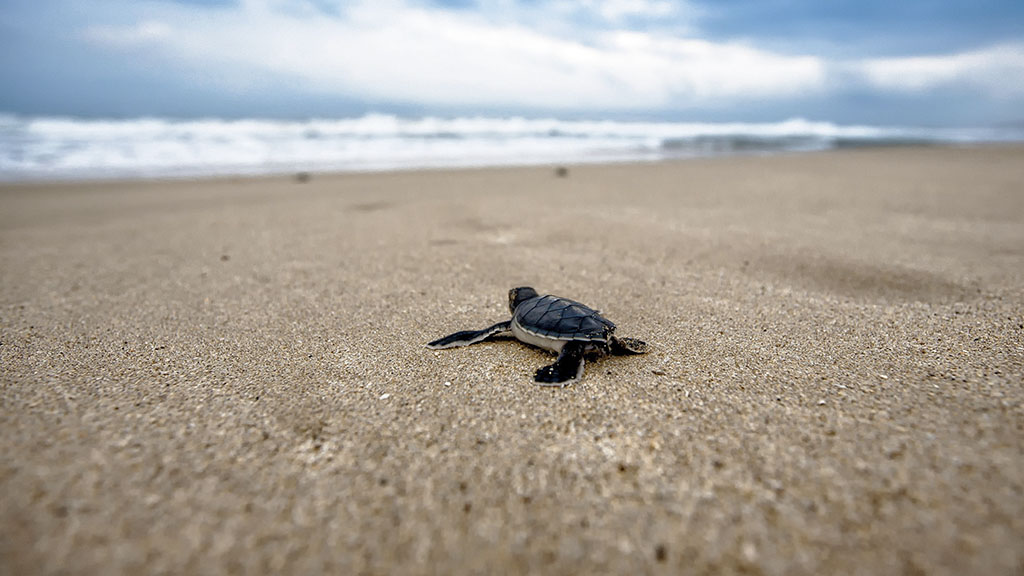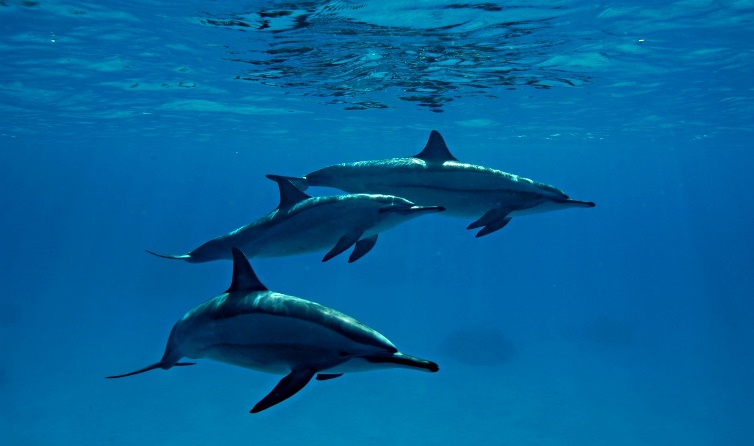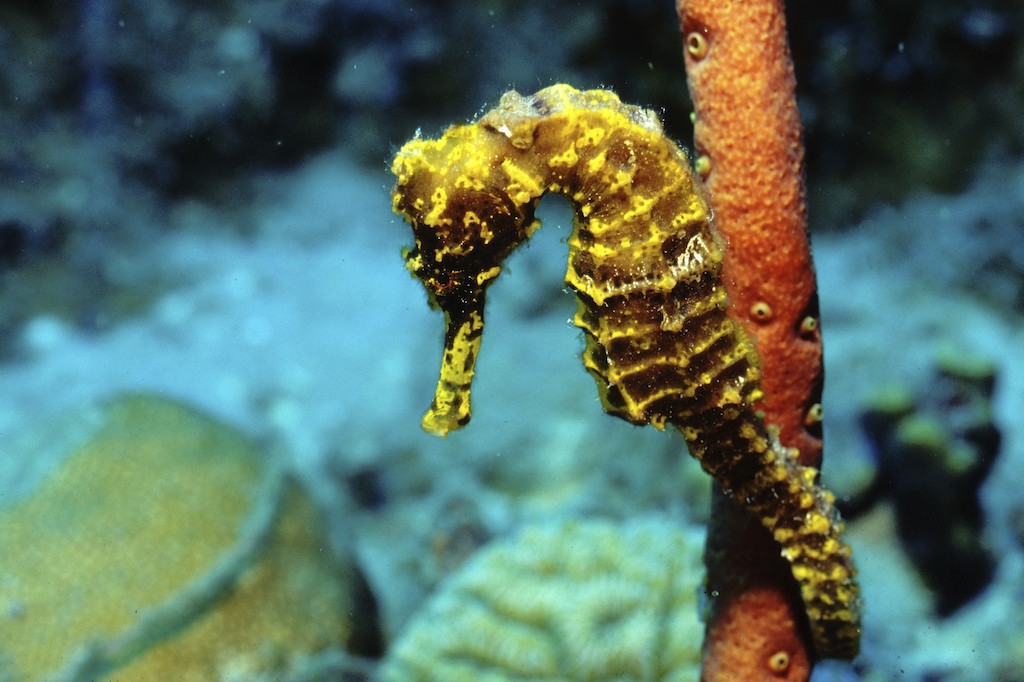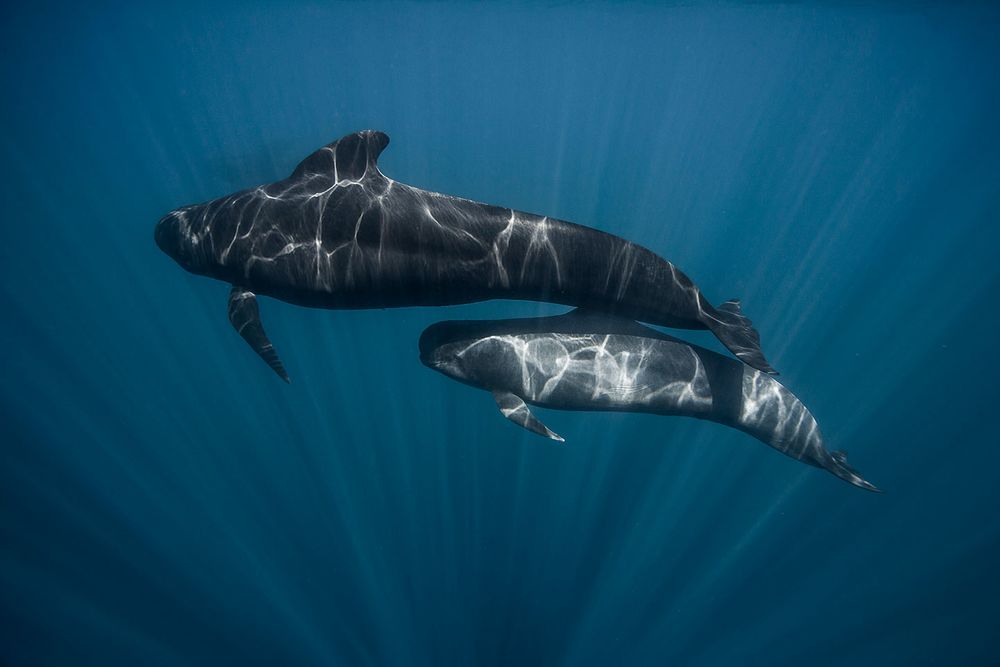You probably already knew that Bonaire is ‘’The fish capital of the Caribbean’’ with more than 470 different type of fishes and 80 dive sites. But do you also know the rarest underwater sightings on Bonaire? Maybe you will be lucky one day, there is always something surprising on our Dushi Bonaire!
8. Dolphins
Wild and free dolphins, a chance encounter! In the best years we would expect to see them once a week on average, in Bonaire we have bottle nose dolphins and spinner dolphins.
Bottle nosed dolphins live in groups. They live in warm oceans and tropical seas. The deepest dive ever recorded for a bottlenose dolphin was 300 meters (990 feet). This was accomplished by Tuffy, a dolphin trained by the US Navy.
7. Manta Rays
Seen in front of Bonaire Oceanfront Apartments a few weeks ago, we can tell you its spectacular!
Mantas are found in warm temperate, sub tropical and tropical waters. They are filter feeders and eat large quantities of plankton, which they swallow with their open mouths as they swim.
6. Seahorses
Maybe they do not look like fish but, did you know that seahorses are classified as fish? Did you ever saw one?
Although 32 different seahorse species have been identified worldwide, the warm waters of the Caribbean Sea serve as home to three species: dwarf, lined and longsnout seahorses.
Seahorse must eat constantly to keep themselves from starvation. This is because their bodies do not have a stomach that retains the food they eat while extracting the necessary nutrients over a long period.
5. Frogfish
Can you spot her?
Frogfishes are small, short and stocky, and sometimes covered in spinules and other appendages to aid in camouflage. The camouflage aids in protection from predators and enables them to lure prey. Many species can change colour and some are covered with other organisms such as algae. In keeping with this camouflage, frogfishes typically move slowly, lying in wait for prey, and then striking extremely rapidly, in as little as 6 milliseconds!
4. Whale Sharks
Luckily in Bonaire all kind of sharks, rays and turtles are protected!
The whale shark is a slow-moving, filter-feeding carpet shark and the largest known fish species. The largest confirmed individual had a length of 12.65 m (41.5 ft) and a weight of about 21.5 ton (47,000 lb).
It is typically found in open waters of the tropical oceans and is rarely found in water below 21°C (70°F). Modeling suggests a lifespan of about 70 years, but measurements have proven difficult.
Whale sharks have very large mouths and are filter feeders. They feed almost exclusively on plankton and are not known to pose a threat to humans.
3. Pilot Whales
Only seen a few times in the waters surrounding Bonaire.
Pilot whales are among the largest of the oceanic dolphins, exceeded in size only by the killer whale. They and other large members of the dolphin family are also known as blackfish.
Pilot whales primarily eat squid, but also various fishes. They are highly social and may remain with their birth pod throughout their lifetime.
2. Humpback Whales
Giant and fantastic to watch! Last time Humpback whales where seen in Bonaire was in the beginning of 2017! When will they visit us next… This picture is taken in Kralendijk (town).
The humpback whaleadults range in length from 12–16 m (39–52 ft) and weigh around 25–30 metric tons (28–33 short tons). The humpback has a distinctive body shape, with long pectoral fins and a knobbly head. It is known for breaching and other distinctive surface behaviors, making it popular with whale watchers.
1. Manatee
And of course, last but not least the manatee! Seen for the first time in the Bonaire Marine Park in July 2018! We hope to see them more often in the future.
The West Indian Manatee or “sea cow” is the largest surviving member of the aquatic mammal order Sirenia. It was placed on the Endangered Species List in the 1970s, when there were only several hundred left, and has been of great conservation concern to federal, state, private, and nonprofit organizations to protect these species from natural and human-induced threats like collisions with boats. On March 30, 2017, the US Secretary of the Interior announced the federal reclassification of the manatee from endangered to threatened as the number of sea cows had increased to over 6,000.








